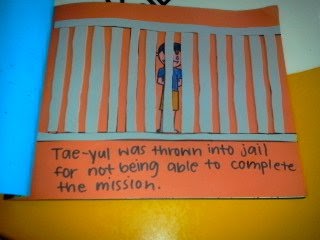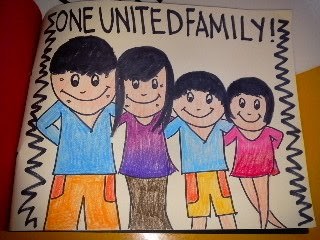Japanese kamikaze pilots waiting for their flights
A Japanese kamikaze pilot gets ready for his suicide attack
Japanese High School Girls Wave to Kamikaze Pilots
Kamikaze - Suicide Pilots of World War II
Kamikaze were Japanese
suicide pilots who attacked Allied warships in the Pacific Ocean during the Second World War. The name means "
divine wind" and
refers to a
typhoon that
destroyed an enemy
fleet in the 13
th century.
After the Japanese had attacked Pearl Harbor in 1941 they were
defeated in many important battles in which they lost ships and airplanes. During 1943 and 1944
Allied forces were moving towards Japan quickly. They pushed the Japanese back to the Philippines, a group of islands that were very important for them. They were
located between the oil fields of Southeast Asia and Japan.
During this
phase of the war the Japanese were not able to build as many ships and warplanes as they were losing in the
battles. They did not have the industries that the Americans did. The Japanese
admirals realized that it was almost
impossible to win against the Allied
troops with few aircraft and not enough good pilots.
For this reason the Japanese
emperor decided to form a special attack
unit. 24 pilots
volunteered for the
mission. It was their
task to crash into Allied ships and kill as many
sailors as possible. The first kamikaze attack
took place in October 1944. A Japanese plane flew straight into an Australian navy ship, killing 30
sailors.
The kamikaze attacks were successful at first. Many pilots were trained to become kamikaze. The Japanese built cheap planes with older engines for these
missions. Pilots usually dropped their
landing gear after takeoff so that it could be used by other planes.
The
Allied troops were afraid of these kamikaze attacks because they could not
defend themselves against them. By the end of the war over 2500 Japanese pilots had
sacrificed their lives. About 5000 American and Allied
sailors were killed in the attacks.
What did kamikaze pilots believe?
Many kamikaze pilots were very young, mostly between 18 and 24. They believed that dying for Japan and their
emperor was very
honorable. They saw themselves much like the
samurai of the Middle Ages,
brave Japanese
warriors.
But not all pilots
volunteered out of love for their homeland. Pilots who didn't
volunteer were seen as
cowards. Some professional pilots did it because they were
forced to.
Before the pilots went on their
missions a special
ceremony usually
took place. They
received a
headband with a rising sun made by a thousand women.
According to some stories pilots flew around a holy mountain and dropped some flowers before they flew on their last
mission,
certain that they would never come back again.
Source:
http://revpatrickcomerford.blogspot.com/2011_02_24_archive.html
http://fellowshipofminds.wordpress.com/2010/08/06/left-distorts-hiroshima-bombing/
http://www.english-online.at/history/kamikaze/kamikaze-suicide-pilots-worldwar.htm



























